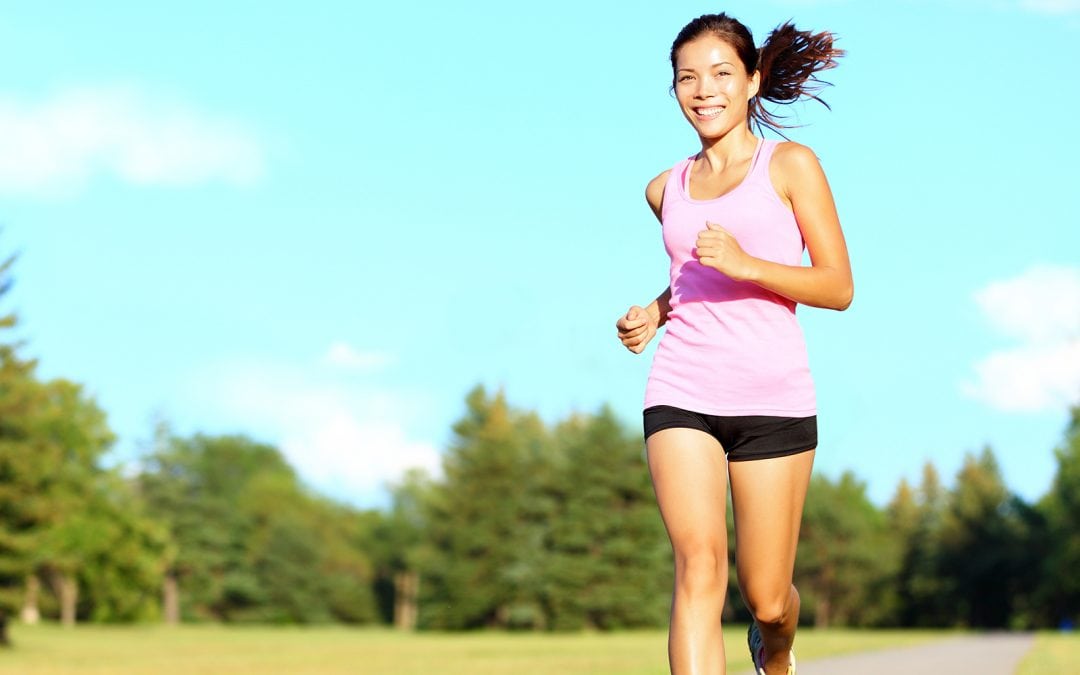There are times when the summer heat can feel delightful on bare skin—especially if you’re at the beach or lounging in the sun. It’s times like this when a summer workout seems perfect. However, there are also times when the rays can be downright unbearable. Hot, sluggish days are the worst, as they can render even the strongest of us lazy and unmotivated.
Working out when it’s 70 degrees outside? No thanks.
If you’re genuinely committed to your fitness, you’ll no doubt find a way, but it’s a bummer when the heat is suffocating, and you’re completely drenched in sweat. Don’t worry; you can avoid the discomfort and still nail your summer workout with these five simple tips:
Change Your Schedule
 The time you work out matters, especially during summer. If you’re designated gym time is between 10 AM and 3 PM—aka the hottest parts of the day—you’ll feel exceptionally drained at the end of your workout. You may also not have as much endurance as usual due to the heat.
The time you work out matters, especially during summer. If you’re designated gym time is between 10 AM and 3 PM—aka the hottest parts of the day—you’ll feel exceptionally drained at the end of your workout. You may also not have as much endurance as usual due to the heat.
Ergo, opt for an alternative schedule. You could try waking up early—around 4 AM or 5 AM—for a morning jog or pre-breakfast workout, or you could hit the gym at about 6 PM when it’s cooler, and then go for dinner straight after with your gym buddies.
>>Learn Fat Burning Workouts you Don’t Want to Miss in 2018
Change Your Location
If you’re used to running, jogging, walking, or cycling on asphalt paths, then switch to dirt or gravel paths for the summer. Asphalt and concrete tend to reflect the sun’s rays, which means they’ll end up radiating heat rather than absorbing it.
Is your running route out in the open? Look for alternative streets with plenty of awnings or trees on the side for shade, like a local park. Stay far, far away from stadiums or track fields, as these are made of asphalt and have virtually no shade to offer (unless you like hiding under the bleachers).
Change Your Temperature
Before you begin your summer workout, hop into the bathroom and have a quick five-minute shower. Studies have found that cooling your body down before you start working out can improve overall physical performance in spite of high temperatures. Dousing your body in cold water can consequently lower your core temperature, skin temperature, and heart rate.
Don’t have the time? Apply an ice pack to the back of your neck or your forehead for three minutes to stimulate the same cooling effect.
Change Your Attire
Used to working out in long-sleeved, dry-fit shirts or black tracksuits? Switch out all that heavy material for loose shorts and light-colored tank tops. You’re probably aware that darker colors absorb light while lighter colors reflect it. Therefore ditch the blacks and dark blues for whites, greys, and pales. You should also switch to cotton shirts if the dry-fit material gets too suffocating.
Change Your Diet
If you’re the kind who doesn’t eat much after working out, consider making an exception for summer. The average adult can lose twice the electrolytes and salt content in their body when working out at extremely high temperatures. This is good for flushing out toxins, but it may take a toll on your physical state.
Replenish your reserves by drinking sports drinks (like Gatorade) throughout your workout. Eat a high-fiber snack after your exercise to replenish your sugar and salt levels. Fruit, nuts, and granola bars all make great post-workout snacks that will fill you up without sabotaging all your hard work.
Overall, beating the heat and doing a full summer workout is entirely doable. Just be smart and sensible about the temperature, and always keep in mind your own personal limits. If you want to avoid serious injuries that could put you out of commission for a while, you need to listen to your body.
